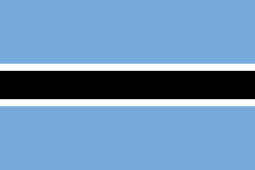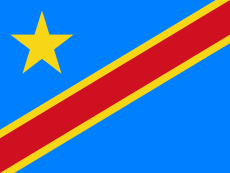Southern Africa

Southern Africa is the southernmost region of the African continent, variably defined by geography or geopolitics, and including several countries. The term southern Africa or Southern Africa, generally includes Angola, Botswana, Lesotho, Malawi, Mozambique, Namibia, South Africa, Swaziland, Zambia, and Zimbabwe. From a political perspective the region is said to be unipolar[1] with South Africa as a first regional power.
Definitions and usage
Another geographic delineation for the region is the portion of Africa south of the Cunene and Zambezi Rivers – that is: South Africa, Lesotho, Swaziland, Namibia, Botswana, Zimbabwe and the part of Mozambique which lies south of the Zambezi River. This definition is most often used in South Africa for natural sciences and particularly in guide books such as Roberts' Birds of Southern Africa, the Southern African Bird Atlas Project and Mammals of the Southern African Subregion. It is not used in political, economic or human geography contexts because this definition cuts Mozambique in two.
UN scheme of geographic regions and SACU
In the UN scheme of geographic regions, five countries constitute Southern Africa:[2]
The Southern African Customs Union (SACU), created in 1969, also comprises the five countries in the UN subregion of Southern Africa.[3]
SADC membership
The Southern African Development Community (SADC) was established in 1980 to facilitate co-operation in the region. It includes:[4]
-
 Angola
Angola -
 Botswana
Botswana -
 Democratic Republic of the Congo
Democratic Republic of the Congo -
 Lesotho
Lesotho -
 Madagascar
Madagascar -
 Malawi
Malawi -
 Mauritius
Mauritius -
 Mozambique
Mozambique -
 Namibia
Namibia -
 Seychelles
Seychelles -
 South Africa
South Africa -
 Swaziland
Swaziland -
 Tanzania
Tanzania -
 Zambia
Zambia -
 Zimbabwe
Zimbabwe
General usages
The region is sometimes reckoned to include other territories:
-
 Angola – part of Central Africa in the UN scheme.
Angola – part of Central Africa in the UN scheme. -
 Comoros,
Comoros,  Madagascar,
Madagascar,  Malawi,
Malawi, .svg.png) Mayotte,
Mayotte,  Mauritius,
Mauritius,  Mozambique,
Mozambique,  Réunion,
Réunion,  Seychelles,
Seychelles,  Zambia,
Zambia,  Zimbabwe – part of Eastern Africa in the UN scheme.
Zimbabwe – part of Eastern Africa in the UN scheme.
The Democratic Republic of the Congo and Tanzania, though more commonly reckoned in Central and Eastern Africa, respectively, are occasionally included in Southern Africa as they are SADC members.
Geography

The terrain of Southern Africa is varied, ranging from forest[5] and grasslands to deserts. The region has both low-lying coastal areas, and mountains.
In terms of natural resources, the region has the world's largest resources of platinum and the platinum group elements, chromium, vanadium, and cobalt, as well as uranium, gold, titanium, iron and diamonds.[6]
Economy
The region is distinct from the rest of Africa, with some of its main exports including platinum, diamonds, gold, and uranium, but it is similar in that it shares some of the problems of the rest of the continent. While colonialism has left its mark on the development over the course of history,[7][8] today poverty, corruption, and HIV/AIDS are some of the biggest factors impeding economic growth. The pursuit of economic and political stability is an important part of the region's goals, as demonstrated by the SADC. In terms of economic strength, South Africa is by far the dominant power of the region. South Africa's GDP alone is many times greater than the GDPs of all other countries in the region.
Environment
Southern Africa has a wide diversity of ecoregions including grassland, bushveld, karoo, savannah and riparian zones. Even though considerable disturbance has occurred in some regions from habitat loss due to human overpopulation or export-focused development, there remain significant numbers of various wildlife species, including white rhino, lion, leopard, impala, kudu, blue wildebeest, vervet monkey and elephant. It has complex Plateaus that create massive mountain structures along the South African border.
There are numerous environmental issues in Southern Africa, including air pollution and desertification.
Culture and people
Southern Africa is home to many cultures and people. It was once populated by San, Khoikhoi[9] and Pygmies in widely dispersed concentrations. Due to the Bantu expansion which edged the previous peoples to the more remote areas of the region, the majority of ethnic groups in this region, including the Zulu, Tsonga, Xhosa, Swazi, Northern Ndebele, Southern Ndebele, Tswana, Sotho, and Shona people, BaLunda, Mbundu, Ovimbundu, Chaga and Sukuma, speak Bantu languages. The process of colonization and settling resulted in a significant population of European (Afrikaner, British, Portuguese Africans, etc.) and Asian descent (Cape Malays, Indian South Africans, etc.) in many southern African countries.
Agriculture and food security
Some key factors affecting the food security within the regions including political instability, poor governance, droughts, population growth, urbanisation, poverty, low economic growth, inadequate agricultural policies, trade terms and regimes, resource degradation and the recent increase in HIV/AIDS.[10][11]
These factors vary from country to country. For example, the Democratic Republic of Congo has favourable climatic and physical conditions, but performs far below its capacity in food provision due to political instability and poor governance. In contrast, semi-arid countries such as Botswana and Namibia, produce insufficient food, but successfully achieve food security through food imports due to economic growth, political stability and good governance. The Republic of South Africa is a major food producer and exporter in the region.[12]
Data on Agricultural production trends and food insecurity especially in term of food availability for Southern Africa is readily available through The Famine Early Warning Systems Network (FEWS NET) and Southern African Development Community (SADC)- Food, Agriculture and Nature Resource Directorate (FARN). However this data might not fully capture the reality of a region with high urban populations and where food insecurity goes beyond per capital availability to issues of access and dietary adequacy.[13][14]
Urban food security has been noted as an emerging area of development concern in the region, with recent data showing high levels of food insecurity amongst low-income households. In a study of eleven cities in nine countries: Blantyre, Cape Town, Gaborone, Harare, Johannesburg, Lusaka, Maputo, Manzini, Maseru, Msunduzi (Durban Metro) and Windhoek, only 17% of households were categorized as ‘food secure’ while more than half (57%) of all households surveyed were found to be ‘severely food insecure’.[15]
Some factors affecting urban food insecurity include climate change with potential impact on agricultural productivity, the expansion of supermarkets in the region, which is changing the way people obtain food in the city, rural to urban migration, unemployment and poverty.[16][17][18][19] The issue of food insecurity in general and urban food insecurity in particular in the region is also characterized by an increased consumption of caloric junk and processed foods leading to potential increase in the co-existence of undernutrition and dietary related chronic diseases such as obesity and hypertension.[20][21] In South Africa for example, while over 50% experience hunger, 61% are overweight or morbidly obese.[22][23][24] There is only limited data on the other Southern African countries.
See also
References
- ↑ "Schenoni, Luis (2017) Subsystemic Unipolarities, Power Distribution and State Behaviour in South America and Southern Africa, in Strategic Analysis 41 (1) 74-86".
- ↑ "Composition of macro geographical (continental) regions, geographical sub-regions, and selected economic and other groupings".
- ↑ Southern African Customs Union (SACU) official website
- ↑ "Southern African Development Community :: Home".
- ↑ Cowling, R. M. (editor); (et al.) (2004) Vegetation of Southern Africa. Cambridge University Press. p. 278. ISBN 0521548012
- ↑ SADC. "Mining". Retrieved 27 June 2013.
- ↑ Woodward, Hayes & Minkley (2002). Deep Histories : gender and colonialism in Southern Africa. Amsterdam [u.a.]: Rodopi. ISBN 90-420-1229-3.
- ↑ Bauer & Taylor (2005). Politics in Southern Africa : state and society in transition. Boulder [u.a.]: Rienner. ISBN 1-58826-332-0.
- ↑ Goeieman, Fred (November 30, 2011). "Bridging a hundred year-old separation". Namibian Sun. Retrieved 2013-05-23.
- ↑ de Waal, Alex; Whiteside, Alan (1 October 2003). "New variant famine: AIDS and food crisis in southern Africa". The Lancet. 362 (9391): 1234–1237. doi:10.1016/S0140-6736(03)14548-5.
- ↑ Misselhorn, Alison (2005). "What drives food insecurity in southern Africa? a meta-analysis of household economy studies". Global Environmental Change. 15: 33–43. doi:10.1016/j.gloenvcha.2004.11.003.
- ↑ Yu, Bingxin; Liangzhi You; Shenggen Fan (January 2010). "Toward a Typology of Food Security in Developing Countries" (PDF). International Food Policy Research Institute. IFPRI Discussion Paper 00945. Retrieved 29 June 2013.
- ↑ FEWS, NET. "Southern Africa Country Centers". Retrieved 29 June 2013.
- ↑ SADC, FANR. "Food Security". Retrieved 29 June 2013.
- ↑ al.], Bruce Frayne .. [et (2010). The state of urban food insecurity in Southern Africa (PDF). [Cape Town]: AFSUN. ISBN 978-0-9869820-1-9.
- ↑ Battersby, Jane (1 June 2012). "BEYOND THE FOOD DESERT: FINDING WAYS TO SPEAK ABOUT URBAN FOOD SECURITY IN SOUTH AFRICA". Geografiska Annaler: Series B, Human Geography. 94 (2): 141–159. doi:10.1111/j.1468-0467.2012.00401.x.
- ↑ Crush, J.; Hovorka, A.; Tevera, D. (21 June 2011). "Food security in Southern African cities: The place of urban agriculture". Progress in Development Studies. 11 (4): 285–305. doi:10.1177/146499341001100402.
- ↑ Riley, Liam; Legwegoh, Alexander (18 June 2013). "Comparative urban food geographies in Blantyre and Gaborone". African Geographical Review: 1–15. doi:10.1080/19376812.2013.805148.
- ↑ Mkwambisi, David D.; Fraser, Evan D. G.; Dougill, Andy J. (1 March 2011). "Urban agriculture and poverty reduction: Evaluating how food production in cities contributes to food security, employment and income in Malawi". Journal of International Development. 23 (2): 181–203. doi:10.1002/jid.1657.
- ↑ Crush, Jonathan; Frayne, Bruce; McLachlan, Milla (2011). Rapid urbanization and the nutrition transition in southern Africa. [Cape Town]: African Food Security Urban Network (AFSUN). ISBN 978-1-920409-69-2.
- ↑ Wrotniak, B. H.; Malete, L.; Maruapula, S. D.; Jackson, J.; Shaibu, S.; Ratcliffe, S.; Stettler, N.; Compher, C. (1 April 2012). "Association between socioeconomic status indicators and obesity in adolescent students in Botswana, an African country in rapid nutrition transition". Pediatric Obesity. 7 (2): e9–e13. PMID 22434762. doi:10.1111/j.2047-6310.2011.00023.x.
- ↑ Fat in Motion. "Obesity in SA". Retrieved 29 June 2013.
- ↑ Reddy, SP; Resnicow, K; James, S; Kambaran, N; Omardien, R; MBewu, AD (12 June 2008). "Underweight, overweight and obesity among South African adolescents: results of the 2002 National Youth Risk Behaviour Survey". Public Health Nutrition. 12 (2): 203–7. PMID 18547451. doi:10.1017/S1368980008002656.
- ↑ LABADARIOS, Demetre; Yul Derek DAVIDS; Zandile MCHIZA; Gina WEIR-SMITH (31 March 2009). "THE ASSESSMENT OF FOOD INSECURITY IN SOUTH AFRICA" (PDF). Human Sciences Research Council. Retrieved 29 June 2013.
Further reading
- "Southern Africa". Encyclopædia Britannica. Retrieved 2013-05-20. (subscription required)